Our Blog - Strawberry Fair, Nabirat, France
Another "food" festival in a tiny little town in France. This time, a Strawberry festival (well, I guess it is a strawberry fair, since the name is the Foire de Fraise). And this is truly in a tiny little town ... 373 people as of 2016. But every year, this little town holds a strawberry festival, with the 22nd edition taking place in May 2019. As you can image, there isn't a lot of information on the history of the town, but the website for the town (yes, they have their own website) says that the first form of the name is Latinized Aperacum. It was doubtless a domain (suffix -acum) belonging to a Gallo-Roman named Aper. Over time, Aperacum became Ebiracum (1283), then Nibirac (1489) and finally Nabirat. By 1701, the town 1,000 inhabitants but gradually went down to where it is today. It is a typically rural area and, while I would have thought mostly old people lived there, the majority are under 60 years old and mostly do agriculture.
There were quite a few things there ... including a place for kids face-painting, pony rides, a clown making balloon sculptures, and various stands selling local wines, plants, and produce. There was also a fairly large "Vide Grenier" (literally an open attic, which is basically a yard/garage sale).
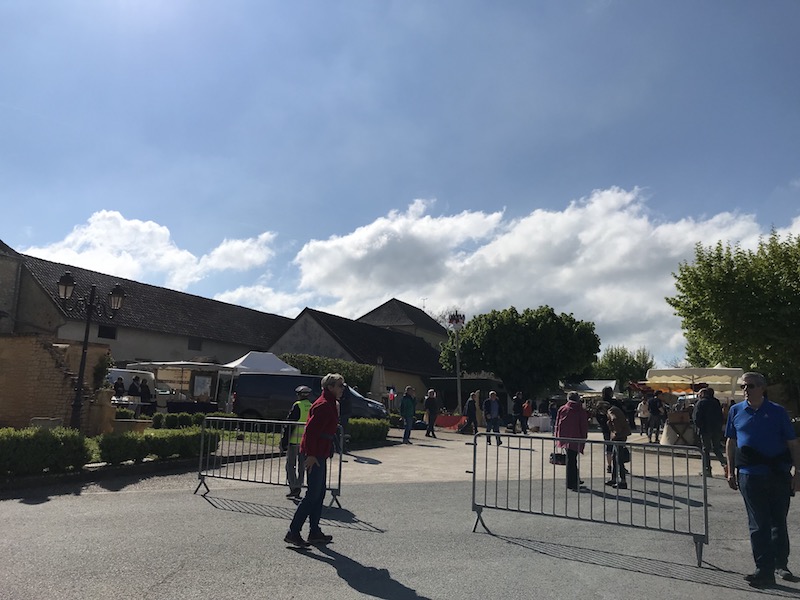
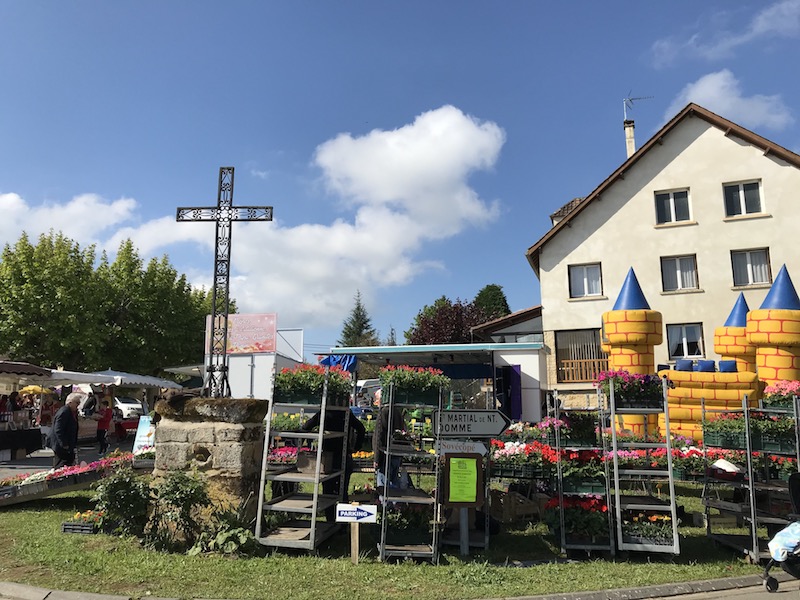
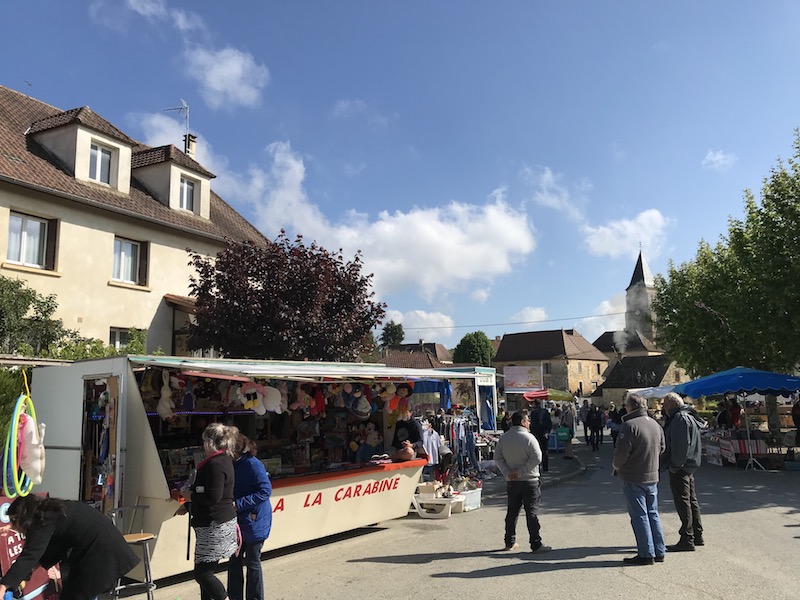
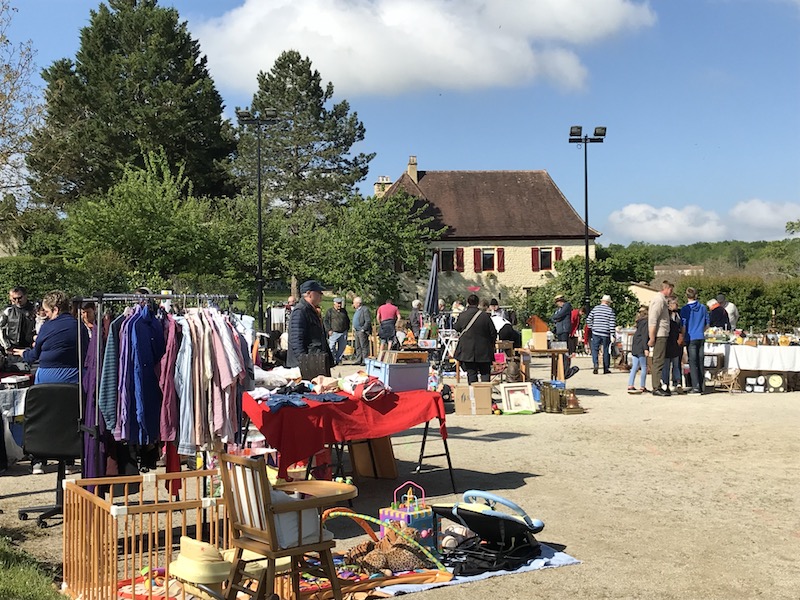
It seems that cooking bread over an open fire is quite normal here, and there is a bread oven in one of the "hamlets" of the town that was put back into service to cook the bread. Here, they were cooking bread in a wood-fired oven that you could purchase.
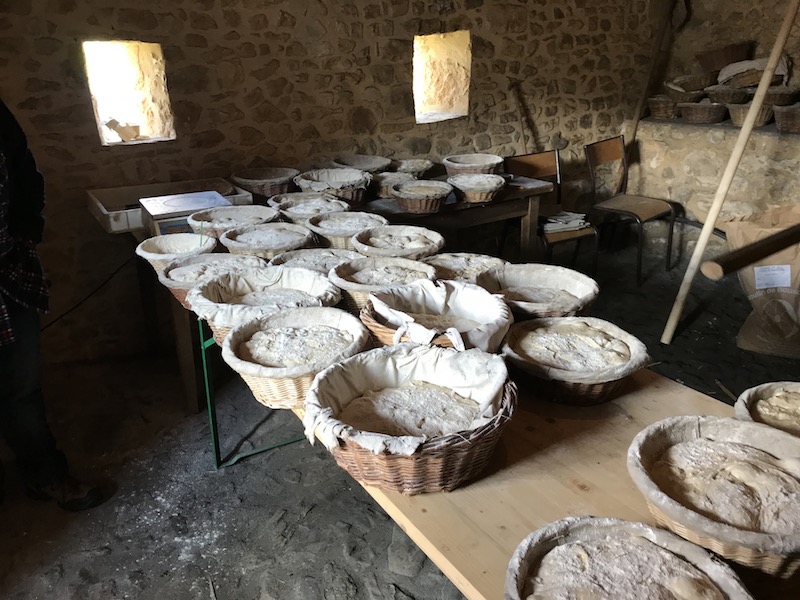

The "big" thing with the fair is the famous giant strawberry tart, which is about 30 m² and is made with around 350 kg of strawberries (that's a LOT of strawberries ... 2.2 lbs per kilo, making it about 770 pounds of strawberries). And of course, we had to buy a couple pieces for dessert!
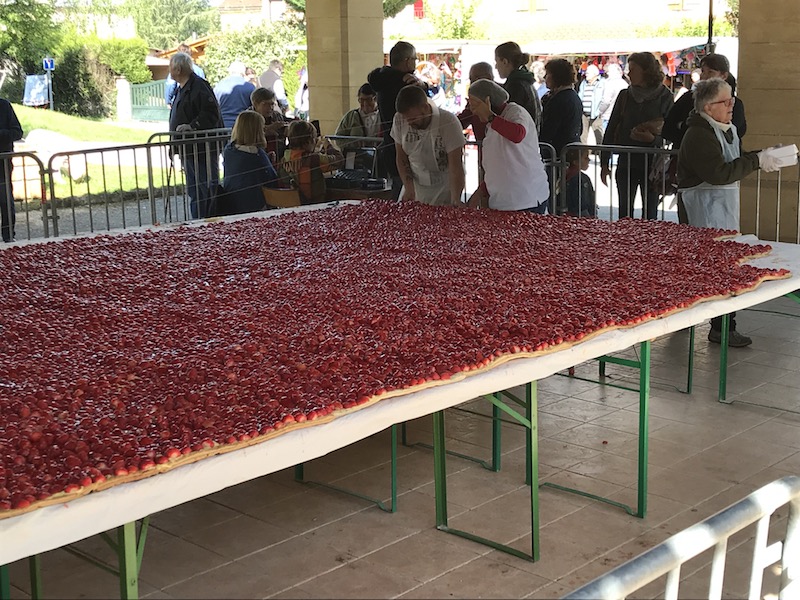
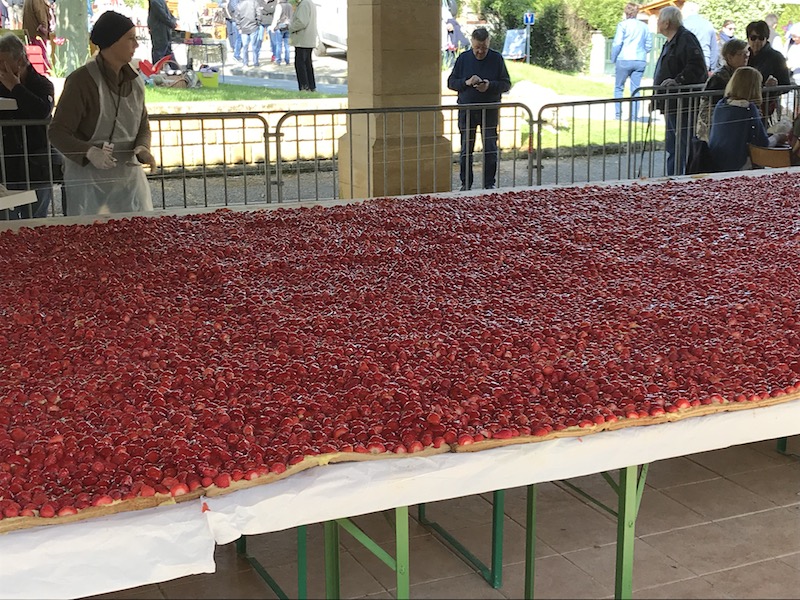


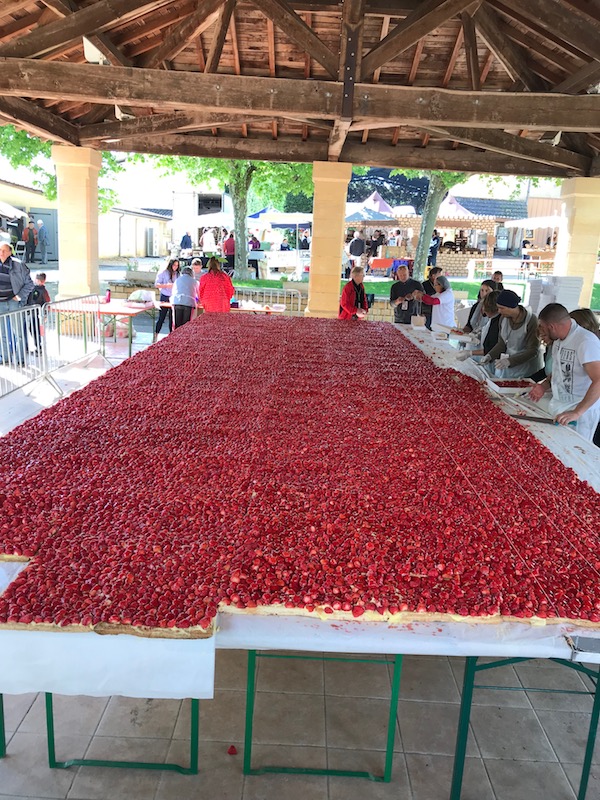

You also could buy locally-grown strawberries (which we did) and they had one little section where they had strawberries growing.


The only "site" to see was the Church of Our Lady of Nativity, which is a Romanesque church dating back to the 12th or 13th century. Mind you, it was closed so we could only see the outside. The bell tower supports 2 bells (1 of 620 kilos, the other 800 kilos). What is there now was finished in 1924. The original bell tower ended up in such bad shape at the end of the 19th century that in 1893, the municipal council voted to destroy and rebuild the bell tower. Work started but then stopped in 1895 because of a disagreement with the contractor. Finally, the work restarted and finished in 1924.
